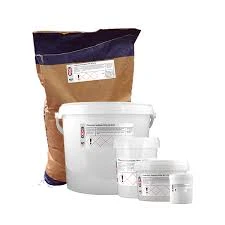
Exploring the Uses and Benefits of Acidity Regulator E296 in Food Products
Understanding Acidity Regulator E296 What You Need to Know
In the world of food production, preservatives, flavor enhancers, and other additives play a crucial role in ensuring product safety, stability, and quality. One such additive that has garnered attention in recent years is E296, more commonly known as malic acid. Understanding what E296 is, how it functions, and its potential effects on health can help consumers make informed choices.
What is E296?
E296, or malic acid, is a naturally occurring organic compound found in various fruits, particularly apples. It is a dicarboxylic acid that is produced in the body and plays a significant role in the metabolic process. In the food industry, malic acid is widely used as an acidity regulator, enhancing the tartness of products while also stabilizing their pH levels.
You may find E296 in a multitude of food products ranging from candies and soft drinks to processed fruits and jam. Its ability to provide a sour flavor profile without the intense acidity of other acids makes malic acid particularly appealing to food manufacturers. Furthermore, its stabilizing effect on pH can extend the shelf life of perishable items, reducing food waste and improving safety.
How Does E296 Work?
As an acidity regulator, E296 possesses the ability to adjust the pH of food products. This adjustment is vital because many food reactions depend on pH levels to occur properly. The right pH can influence taste, texture, and overall consumer acceptance of food. For instance, products with a balanced pH are less likely to support the growth of harmful bacteria, making malic acid not only a flavor enhancer but also a form of preservation.
When added to food, E296 dissociates into malate ions, which interact with the hydrogen ions present in the food matrix. This interaction elevates the acidity level, empowering food with a more vibrant taste. It is particularly popular in the manufacturing of sour candies, where a balanced sourness is essential to appeal to consumers.
acidity regulator 296

Health Considerations and Safety
The safety of food additives is a common concern among consumers. The use of malic acid as E296 has been assessed by various health authorities, including the European Food Safety Authority (EFSA) and the U.S. Food and Drug Administration (FDA). Both organizations have classified malic acid as safe for consumption within specified limits. However, as with any substance, excessive intake could lead to health issues.
Some individuals may be sensitive to acids and could experience mild gastrointestinal discomfort, such as bloating or irritation, when consuming products high in acidity. It is advisable for these individuals to read food labels carefully and moderate their intake of highly acidic foods and beverages.
Environmental Impact
As a naturally derived substance, malic acid has a more favorable environmental profile compared to synthetic additives. The production of E296 can be traced back to natural sources, which makes it a more sustainable choice for manufacturers and consumers who are mindful of environmental impacts. The use of natural components in food production is increasingly being prioritized as the food industry shifts towards more sustainable practices.
Conclusion
E296, or malic acid, plays an integral role in modern food production as an acidity regulator. Its ability to enhance flavors, preserve food, and interact beneficially within food matrices makes it a valuable additive. As consumers continue to demand transparency in food labeling and ingredient sourcing, understanding the complexities of substances like E296 becomes paramount. While it is considered safe by regulatory bodies, being mindful of personal sensitivity and consumption levels is crucial. As we advance, embracing naturally derived food additives like E296 could pave the way for a more health-conscious and environmentally friendly food industry. Whether you savor a tart apple or a deliciously sour candy, know that E296 is likely contributing to that distinctive taste experience.
-
nitrile-rubber-honoring-strict-production-standardsNewsAug.22,2025
-
aspartame-ingredients-honoring-food-safety-valuesNewsAug.22,2025
-
fertilizer-for-balanced-plant-nutritionNewsAug.22,2025
-
cyanide-gold-processing-with-high-purity-additivesNewsAug.22,2025
-
formic-acid-in-textile-dyeing-applicationsNewsAug.22,2025
-
aluminum-hydroxide-gel-in-skincare-productsNewsAug.22,2025
-
Regulatory Compliance for Global Mining Chemicals UseNewsAug.12,2025
Hebei Tenger Chemical Technology Co., Ltd. focuses on the chemical industry and is committed to the export service of chemical raw materials.
-

view more DiethanolisopropanolamineIn the ever-growing field of chemical solutions, diethanolisopropanolamine (DEIPA) stands out as a versatile and important compound. Due to its unique chemical structure and properties, DEIPA is of interest to various industries including construction, personal care, and agriculture. -

view more TriisopropanolamineTriisopropanolamine (TIPA) alkanol amine substance, is a kind of alcohol amine compound with amino and alcohol hydroxyl, and because of its molecules contains both amino and hydroxyl. -

view more Tetramethyl Thiuram DisulfideTetramethyl thiuram disulfide, also known as TMTD, is a white to light-yellow powder with a distinct sulfur-like odor. It is soluble in organic solvents such as benzene, acetone, and ethyl acetate, making it highly versatile for use in different formulations. TMTD is known for its excellent vulcanization acceleration properties, which makes it a key ingredient in the production of rubber products. Additionally, it acts as an effective fungicide and bactericide, making it valuable in agricultural applications. Its high purity and stability ensure consistent performance, making it a preferred choice for manufacturers across various industries.





